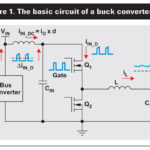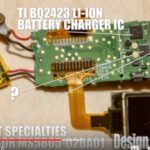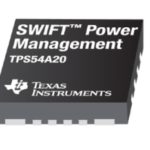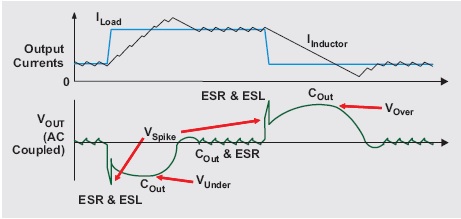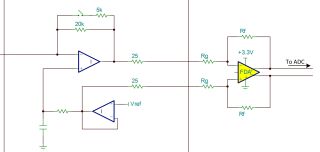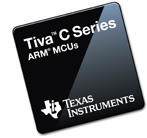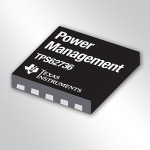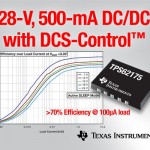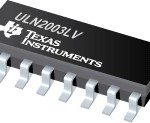by Maniing Xie, System Application Engineer, Power Design Systems, Texas Instruments Electromagnetic interference (EMI) can create serious issues for manufacturers in an industrial environment. A buck converter generates a pulsating ripple current with high di/dt at the input. Without input capacitors, ripple current is supplied by the upper power source. Printed circuit board (PCB) resistance […]
texasinstrumentsinc
Video teardown: Inside the Fitbit Charge
We recently took a close look at a Fitbit, made possible after our recent acquisition of a PC-based microscope for examining tiny stampings of part numbers on super-small ICs. Lots of interesting hardware here: The watch uses two accelerometers and two different processors. The one disappointing aspect of the analysis was that we couldn’t really […]
12-V, 10-A, 10-MHz dc/dc converter
has super-high power density
A new dc/dc converter is said to be the industry’s first 12-V, 10-A, 10-MHz series-capacitor buck converter to provide more than 50 A/cm3 in current density, four times higher than any other 12-V power management component or system. Developed by Texas Instruments, the TPS54A20 SWIFT synchronous dc/dc converter uses a special topology to operate at […]
Ceramic or electrolytic output capacitors in DC/DC converters – Why not both?
By Michael Score, Texas Instruments Switching power supplies are used in almost every end-equipment that needs a long battery life, low heat generation, or to meet ENERGY STAR® guidelines. When designing a switching power supply, it is difficult to decide which output capacitor type to use. Electrolytic capacitors have high equivalent series resistance (ESR), making […]
Transimpedance Amplifier: Which power chain
should I consider to maximize performance?
The behavior of a transimpedance amplifier relates directly to the performance of its power supply. Here a low-dropout design with a high power-supply-rejection-ratio can help. Xavier Ramus, Product definer, Linear Regulator and Supervisors group Texas Instruments Inc. Transimpedance amplifiers (TIA) are used in many applications, from automotive collision avoidance light detection and ranging (LIDAR) systems […]
MCUs with higher speeds, larger memory and lower power
The new Tiva C series TM4C123x ARM is the first Cortex-M-based MCUs to be built on 65 nanometer technology, setting the roadmap to higher speeds, larger memory and lower power. Use in home, building and industrial automation applications. The TM4C123x (formerly Stellaris LM4 MCUs) are built upon the TivaWare software development environment to ensure easy […]
How low can you go with power?
Answering the question, “How low can you go with power?” Texas Instruments Incorporated (TI) (NASDAQ: TXN) introduces the industry’s lowest power DC/DC step-down converter, which increases the amount of harvested energy an end application can use as much as 70 percent over alternative devices. The ultra-low power circuit enables battery-free power to applications, such as […]
TI’s new 28-V, 500-mA step-down converter provides highest efficiency at light loads
Texas Instruments Incorporated introduced a synchronous, 28-V, 500-mA step-down DC/DC converter that can operate at less than 5 uA during “sleep” mode. The new TPS62175 maintains high efficiency during light load operation, while supporting ultra-low power microcontrollers that operate in 12-V, 15-V and 24-V applications, such as industrial sensor, smart meter, medical and wireless power […]
Fully Integrated 1.8-V And 3.3-V, Seven-channel Relay Driver
The ULN2003LV is a fully integrated, seven-channel relay driver that can support low-voltage relays from as low as 1.8 V up to 5 V. It is a relay driver that replaces a handful of discrete components with a single device and lowers voltages for data relays and rails within telecommunications equipment. When using this integrated […]

